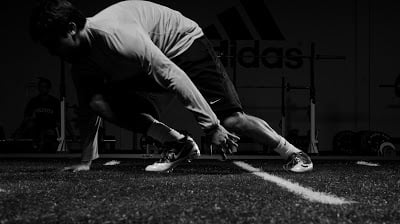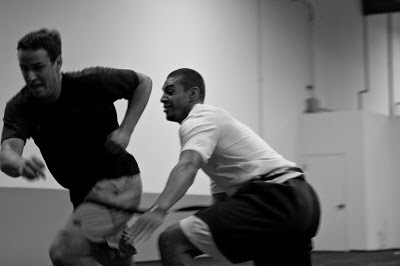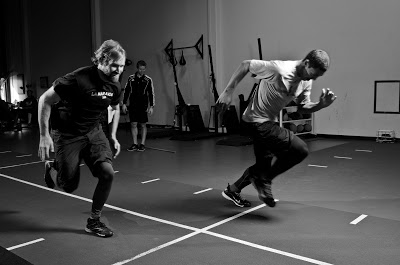
Agility is a confusing term, as so many of us see this ability in the context within which it occurs. I might see this characteristic measured by a timed exercise involving changes of direction, while sport coaches see this ability as their athletes’ reaction time in a game or match. The answer is that we are both right; agility is broken down into 2 major components; decision making factors and change of direction speed.
A 2006 review out of the Australian Institute of Sport defined agility as a rapid whole body movement with change of velocity or direction in response to a stimulus. The authors, Jeremy Sheppard and Warren Young, provided the breakdown mentioned above, identifying decision making factors and change of direction speed as 2 critical pieces

The most relevant and efficient means to improve decision making is to play your sport (see Sparta Point). As athletes become more experienced, they can anticipate, recognize, and know situations from their experience. This reaction ability is often used by the word quickness, which is a value that is largely determined by genetics and again…the hours spent “learning” your sport (see Sparta Point). However, being a blog about GRF and its application to sport, we will focus on the physical factors, which in this case, is the change of direction speed.
Our program involves relatively 33% more straight ahead speed movements and acceleration exercises like a 10 yard sprint. This imbalance is due to the above findings that the quality of the change of direction, timed or otherwise, is largely gauged by one’s ability to accelerate out of it.
For our deceleration drills, we correctly repeat the agility drill over and over again to ensure technique improvement, particularly the angles of GRF (see Sparta Point).

So the final component to improve change of direction speed is leg strength. Two research studies, most recently a March 2012 paper out of University of Malaga, found that the vertical jump test explained 46-49% of the change in direction test. Authors concluded that these findings were due to the superior ability of the vertical jump to assess the stretch shortening cycle (see Sparta Point). This high relationship also makes sense because a vertical jump is just simply a change of direction. Previous authors have explained this positive relationship due to GRF required for a good vertical jump. Despite agility runs being a horizontal or lateral change in direction, vertical force accounts for much of the total GRF exerted when the athlete contacts the ground to change direction. After all, the primary resistance is still gravity.
Within our Force Plate system, we define agility as the ability to produce force at effective angles. So the athletes with higher DRIVE variables are more adept at changing direction, which makes sense from our previous discussion in this characteristic helping producing movements in a direction other than vertical (see Sparta Point). The higher mobility present in DRIVE athletes allows them to set up more severe angles of force production.
So if you’re banging your head on the wall, running agility after agility, make sure you don’t forget how important straight ahead speed is to your change of direction. Of course, the best solution is to jump even higher by producing more GRF, and then you can improve both sprint and change of direction speed at the same time.
But if you might have more time to waste than we do, please throw in those “agility” ladders because low GRF with little angles is probably most effective.
Castillo-Rodríguez A, Fernández-García JC, Chinchilla-Minguet JL, Carnero EÁ. Relationship between muscular strength and sprints with changes of direction. J Strength Cond Res. 2012 Mar;26(3):725-32.